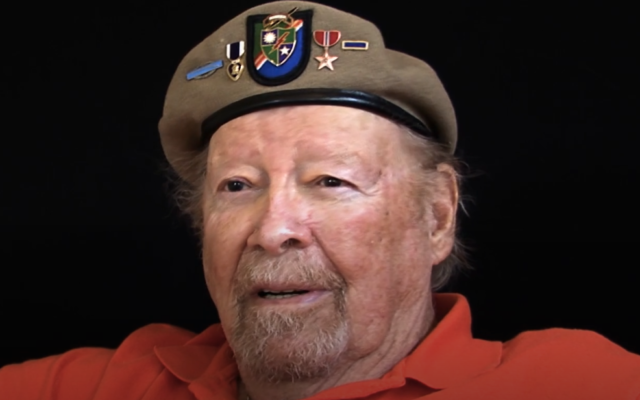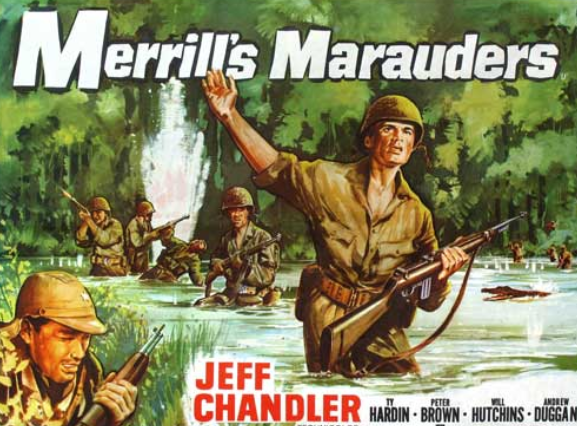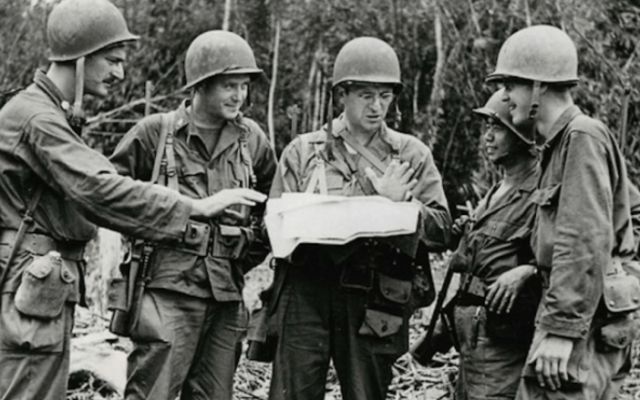Last Jewish Member of Merrill’s Marauders Dies
When Stanley Sasine died last month, at 97, he was the last of a handful of veterans of the fabled fighting force — and almost certainly its last Jewish member.

Stanley Sasine was only 18 and in his second week as a freshman at Cornell University when he was drafted to fight in World War II in February 1943. Sasine had wanted to join the ranks of what was then known as the U.S. Army Air Corps, but he was color blind and flunked the physical.
For Brigadier General Frank Merrill, who was then putting together an army unit that would fight a guerrilla war in the jungles of Burma, colorblindness was an important quality, as it would allow Sasine to easily pick out camouflaged Japanese snipers. Merrill made him the unit’s first scout and he became a founding member of what came to be called Merrill’s Marauders, a legendary unit that was the forerunner of the Army’s Special Forces, or Rangers.
The unit entered popular culture in 1962, when Jewish American actor Jeff Chandler starred in a popular 1962 film adaptation of their wartime exploits.
When Sasine died last month in Atlanta, at 97, he was the last of a handful of veterans of the fabled fighting force and almost certainly its last Jewish member.

An expert marksman and a decorated war hero, Sasine credited his scouting abilities with helping him to survive brutal and deadly jungle combat behind Japanese enemy lines.
Sasine’s unit harassed Japanese forces with a series of quick attacks, many lasting no more than six minutes, before they broke off contact and disappeared back into the jungle. Official records show that the unit engaged in formal combat 32 times and fought five major battles.
Sasine remembered one incident vividly, even 75 years after it had occurred. In a video interview with the website Witness to War, recorded shortly before he died, Sasine recalled coming face-to-face with a Japanese soldier while on patrol.
“My hand was on the trigger before he could get to his,” he said. “I had a Thompson .45 machine gun that does not shoot straight. You had your fingers on it and you got 10 shots going from eight o’clock to two o’clock. Those bullets cut this little guy in half and I recall it like it was yesterday. I see it now. It’s terrible. No scream, no noise. Just a machine gun. That was my first kill and it remains with me in my dreams.”
For years after, Sasine would wake up in a cold sweat from dreams like this and would need a few calming words from his wife before he could get back to sleep. But the incident didn’t keep him from daily combat. In a profile in the Atlanta Jewish Times for Sasine’s 95th birthday, he spoke about the Burma campaign and being a deadly shot.

“I must have picked off 250 Japanese in those trees. At times I would get them at 300 yards, but when I was that far away I couldn’t hear them get hit, so I moved closer just to make sure they got hit.”
Deadly combat was just one of the many threats the Marauders faced. During the 1944 campaign, disease killed five times as many of the soldiers as enemy bullets and shells did. The field hospital staff described their patients as “so tired, dirty and hungry that they looked more dead than alive.” In the jungle, Sasine and his buddies had to fight exhaustion, malnutrition and epidemics of cerebral malaria and scrub typhus. Often, they fought through bouts of bloody dysentery while sloshing through rivers of mud created by monsoon rains.
Eventually, toward the end of the campaign, an enemy bullet brushed Sasine’s cheek and badly wounded his shoulder. It took the better part of a year to recover.
At one point, several survivors of the unit visited Sasine in the hospital and presented him with a gift of the Long Tom Japanese sniper rifle they had captured from the soldier who had wounded him.
Because soldiers were not allowed to bring captured weapons back to the United States, he ultimately disassembled the five-foot-long rifle and mailed it back home in pieces. Before he died, it stood as a treasured possession in the corner of his small one-bedroom apartment.
Sasine finally came home in December 1945, but decided not to go back to college and began a successful business career instead. He married, had four children, 14 grandchildren and 18 great-grandchildren. He and his wife were married for 69 years before she died almost seven years ago.
Sasine was one of the few remaining survivors of what the author and television journalist Tom Brokaw had called the Greatest Generation — those men and women who went off to defend America not for fame or fortune, but because it was the right thing to do.



comments